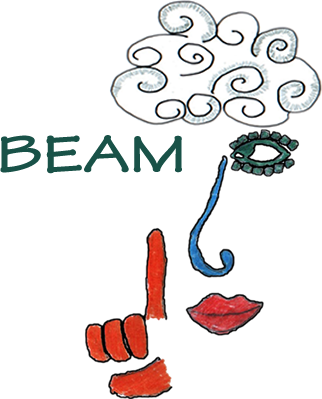
Imagining movement
Maeve Stillman, our Autism@Manchester intern, PhD student Ying Bai and Dr Emma Gowen describe one of the studies in the Body, Eye and Movement (BEAM) lab
Many autistic people have difficulty with recognising and performing movements. For example, they can find it more challenging to recognise what another person actions mean as well as do up buttons, prepare food or move around without bumping into things.
This study asked whether autistic individuals are able to rehearse a physical action in their minds despite these movement difficulties and found that they could do this as well as non-autistic people. Imagining a movement without physically performing it is called motor imagery and can be useful for helping us to learn new or improve existing actions. For example, Billie Jean King the famous tennis player used visualisation techniques to perfect her tennis shots as far back as the 1960’s.
Uncovering whether autistic people can use motor imagery is important for understanding whether this technique could be used to help autistic people improve their motor skills. Therefore, this study set out to discover whether autistic people can use motor imagery and any difference with non-autistic adult’s ability to imagine, recognise, and complete actions.
Autistic and non-autistic adults were given a series of move ment tasks involving physically positioning their dominant index finger between various targets then imagining or observing these movements (see figure). For the observation task, participants had to indicate whether they could perform the speed shown. Each task had three different difficulty levels. Typically, performance time increases with difficulty level and if a person is using motor imagery to perform the task this pattern will be similar whether psychically executing, imagining or observing the action. Results showed that as the difficulty of the task increased so did the movement time in all three conditions. Importantly, this pattern was the same for the autistic and non-autistic individuals.
ment tasks involving physically positioning their dominant index finger between various targets then imagining or observing these movements (see figure). For the observation task, participants had to indicate whether they could perform the speed shown. Each task had three different difficulty levels. Typically, performance time increases with difficulty level and if a person is using motor imagery to perform the task this pattern will be similar whether psychically executing, imagining or observing the action. Results showed that as the difficulty of the task increased so did the movement time in all three conditions. Importantly, this pattern was the same for the autistic and non-autistic individuals.
The findings highlight that autistic individuals in this study were able to use motor imagery successfully which could inform further development in therapies and support for improving motor skills.
The study was conducted by Ying Bai and is a collaboration between Drs Emma Gowen and Ellen Poliakoff (The university of Manchester) and Professor Tim Welsh, Dr April Karlinksy and Molly Brillinger (The University of Toronto) The project is funded by The Universities of Manchester and Toronto.






0 Comments